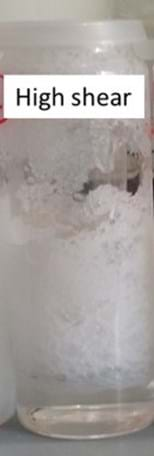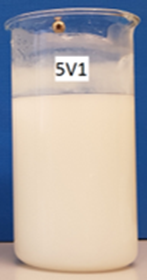Surfactants are present in most consumer products. The most familiar examples are shampoos, hand wash products and cleaning products. Switching to sulfate free surfactants improves the environmental profile, but can be a challenge.

How to use cellulose fibrils with foam forming surfactants
One can use cellulose fibrils with foam forming surfactants to thicken and stabilise formulations. The most important point to remember when preparing such formulations is to avoid foam formation during the step of incorporating surfactants with the cellulose fibrils.
The trend is to move towards sulfate free surfactants. One advantage of doing so is to obtain a better green and environmental profile of formulated products. Therefore, it is a requirement that the ingredient used to improve the formulation of a sulfate free product be safe for use and have an environmentally friendly profile. The challenge is finding innovative ways of thickening and stabilising such systems.
Cellulose fibrils have shown to be very efficient in thickening and stabilising sulfate free formulations, as shown in Figure 1. They improve rheology and stability due to the three dimensional physical network that is formed in the formulation when the product is dispersed according to recommendations.
It is very important to understand how best to use cellulose fibrils in surfactant based systems, especially those with foam forming ability.
Figure 1. Viscosity of 2% Cellulose fibrils suspension in 10% surfactant solution measured with Brookfield viscometer (10 rpm, Spindel V-73).
How can one obtain stable formulations when using cellulose fibrils and foaming surfactants?
Cellulose fibrils have a very high yield stress. They are very good stabilisers of particles, pigments, capsules, oil droplets and air bubbles. The three dimensional network of the cellulose fibrils in a formulation lends to physically holding in place such structures, hence, enhancing their stability. In the case of air bubbles, cellulose fibrils will stabilise them when created in a formulation regardless whether they are formed during the formulating step or during product use.
The result of such an effect during the incorporation stage can be the unwanted phase separation during use of the product. The outcome can be longer and better foam stability, a positive effect.

Figure 2. is a picture of a phase separated formulation containing a foaming surfactant and cellulose fibril mixed using high shear.
Figure 2. shows the outcome of mixing cellulose fibrils with foaming surfactants at high shear and allowing the incorporation of air. Due to incorporation of air bubbles and foam, a foaming upper phase and a transparent lower phase are formed after some time, leading to phase separation. It is therefore important to avoid foam formation during the formulation step. One should mix the dispersed cellulose fibrils and foam forming surfactants at optimised mixing speed and avoid air incorporation.
Figure 3. is a picture of a stable formulation containing a surfactant and cellulose fibrils. This formulation was prepared without any foam formation during the mixing step of the dispersed cellulose fibrils and the foaming surfactant.
Cellulose fibrils are dispersed in the water phase using high shear if necessary. Mixing speed was reduced and the surfactant was added to the cellulose fibrils.

Figure 3. is a picture of a formulation containing a surfactant and cellulose fibrils.
Good dispersion is a critical factor for success
A general advice when you do not obtain the expected effect in your formulationss is to examine the dispersion method and order in which the ingredients are added. If you suspect there is a problem with the dispersion, it might be a good idea to test different dispersion times and methods and see if this makes a difference.
The take-home message is that when using cellulose fibrils in your formulations, good dispersion is a critical factor for success.


